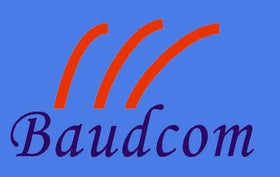When it comes to networking infrastructure, fiber optic ethernet converter play a pivotal role. These devices allow you to extend the range of Ethernet networks over fiber-optic cables, ensuring that data travels efficiently across longer distances. But when selecting a fiber media converter for your business or personal network, a key decision is whether to choose a managed vs. unmanaged network solution. Both have their pros and cons, and finding the right balance between cost and control is essential. So, let’s dive into an evaluation of these two options to help you make an informed decision.
Unmanaged Fiber Media Converters: Simple, Cost-Effective, and Limited Control
Unmanaged fiber media converters are the "plug-and-play" option. They work out of the box, typically requiring no configuration or setup. For basic applications where you simply need to connect devices over fiber, unmanaged converters are a straightforward and affordable choice.
Pros of Unmanaged Fiber Media Converters:
1. Lower Cost: Unmanaged converters are much cheaper than their managed counterparts. For organizations or individuals with a limited budget, these are the go-to solutions. The absence of advanced features means you don’t pay for unnecessary extras.
2. Ease of Use: Because they don’t require configuration, unmanaged converters are easy to set up and use. This makes them ideal for non-technical users or environments where simplicity is key.
3. Reliability: Unmanaged devices tend to be more stable over time since there’s less complexity involved. Fewer features mean there’s less chance of failure, making these converters a reliable, no-fuss choice for basic needs.
Cons of Unmanaged Fiber Media Converters:
1. Limited Features: The simplicity that makes unmanaged converters easy to use also limits their flexibility. There’s no way to monitor, manage, or troubleshoot the device remotely. This can become a problem if you face issues in the future.
2. No Performance Monitoring: With unmanaged converters, you're blind to the health of your network. There's no way to track bandwidth usage, network traffic, or error rates, which can lead to slower troubleshooting and longer downtime if something goes wrong.
3. Scalability Issues: Unmanaged converters may not be suitable for larger, more complex networks where performance monitoring and remote configuration are essential.
Managed Fiber Media Converters: Control, Customization, and Price
Managed fiber media converters offer all the features of unmanaged fiber media converter ethernet, but with added control. They provide an administrative interface—typically web-based or via a network management system (NMS)—that lets you configure and monitor the device, troubleshoot issues, and even control traffic.
Pros of Managed Fiber Media Converters:
1. Advanced Control and Customization: Managed converters allow you to tweak settings like VLAN support, QoS (Quality of Service), and even network security protocols. This makes them ideal for environments with more demanding needs.
2. Remote Monitoring and Management: One of the most significant advantages of managed converters is the ability to monitor network traffic, identify bottlenecks, and pinpoint potential issues before they become a problem. This helps to avoid downtime and maintain high network performance.
3. Scalability: As networks grow, so do the demands for management and oversight. Managed converters offer scalability, meaning that they can easily adapt to more complex environments as your network expands.
4. Enhanced Troubleshooting: With built-in diagnostic tools, you can run tests on the converter and connected devices. Features like port mirroring, error logging, and loop detection make it easier to identify problems.
Cons of Managed Fiber Media Converters:
Higher Cost: With greater functionality comes a higher price tag. Managed fiber media converter ethernet costs significantly more than unmanaged ones, which can be a deterrent for businesses operating on tight budgets.

Cost vs. Control: The Trade-Off
At the core of your managed vs. unmanaged network decision lies the balance between cost and control.
l Unmanaged fiber media converters are a solid choice if you're working with a limited budget and don’t require a lot of advanced features. They’re cost-effective, simple to use, and sufficient for basic networking needs.
l Managed fiber media converters, on the other hand, are better suited for larger, more complex networks where uptime, scalability, and remote management are essential. The additional cost comes with greater control, customization, and proactive network management.
Managed vs. Unmanaged network: When to choose them?
When to Choose Unmanaged Converters
· Small offices or home networks that don’t require advanced features.
· Temporary or simple installations where cost is the primary concern.
· Users who need to connect a few devices over fiber without needing to monitor performance or configure specific settings.
When to Choose Managed Converters
· Large-scale networks where monitoring, troubleshooting, and performance optimization are critical.
· Businesses with a dedicated IT team or those that need remote management and control over their network infrastructure.
· Environments that require robust security measures, quality of service (QoS) management, or complex VLAN setups.
Final Thoughts: Know Your Needs
Ultimately, the choice between managed vs. unmanaged network transition networks fiber media converter comes down to the specific needs of your network. If you value control, monitoring, and scalability—and are willing to pay the price for it—managed converters are your best bet. However, if simplicity and cost-effectiveness are your priorities, an unmanaged solution may suffice.
In the world of networking, one size never fits all. Weighing the trade-offs of cost vs. control is key to choosing the right fiber media converter ethernet for your needs.
This article introduces some basic information about managed media converters and unmanaged media converters and their usage. This information may not be comprehensive. It is just a reference. As a leading supplier in the optical communications industry, Baudcom provides a range of managed vs. unmanaged network fiber media converter ethernet with various configurations. Contact us; we are always ready to support you!


